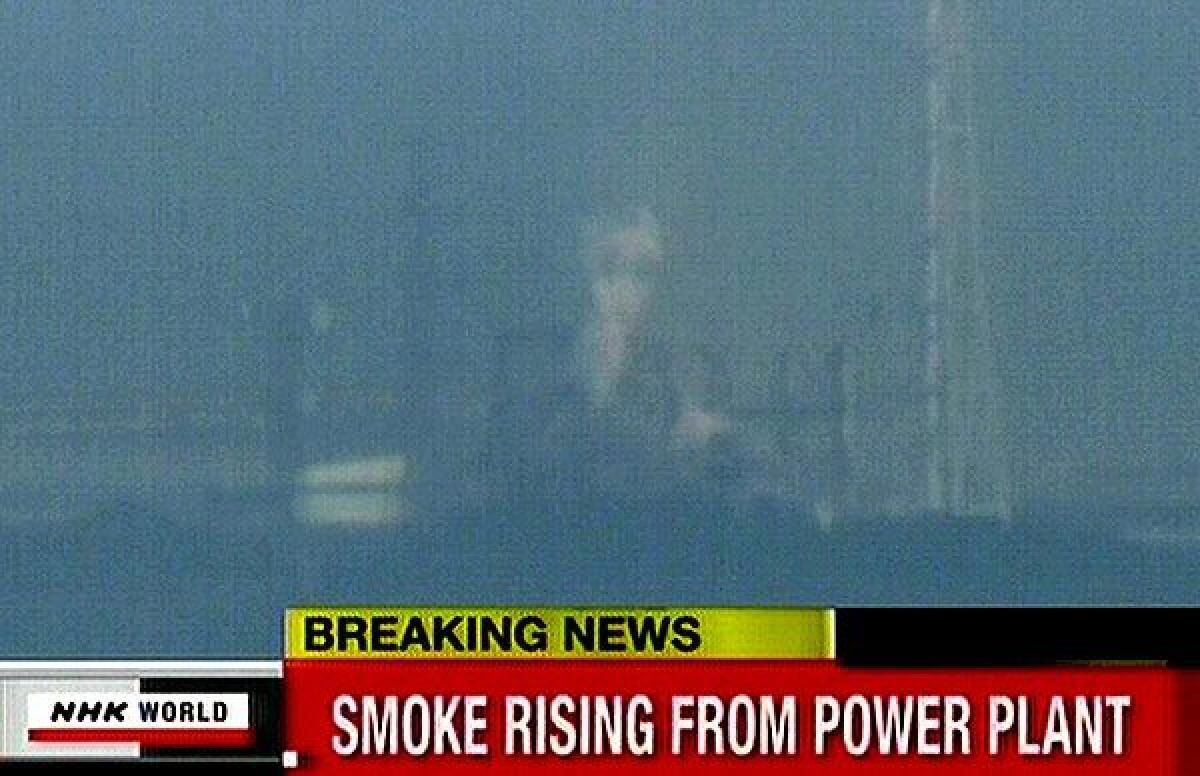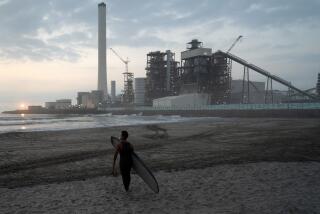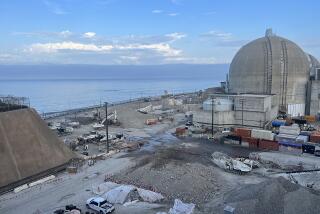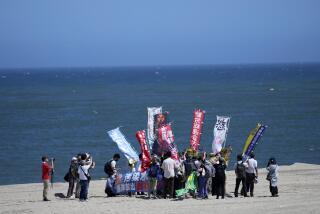Japanese engineers work to contain nuclear reactor damage

Engineers are now pumping seawater laced with boron into two nuclear reactors at Japan’s Fukushima No. 1 (Daiichi) power plant 150 miles north of Tokyo and are considering doing it at a third reactor in a last-ditch effort to stave off a meltdown that could release dangerous amounts of radioactivity into the environment. Hydrogen explosions have now occurred at two reactors at the facility. Here’s a look at the engineers’ efforts and what the potential consequences are, according to various experts.
Why do the reactors have to be cooled?
Nuclear reactors operate through the chain-reaction splitting, or fissioning, of uranium atoms. The process creates heat used to turn water into steam. When an earthquake occurs, a safety mechanism inserts control rods into the core of the reactor to halt the chain reaction. But the fuel rods continue to produce excess amounts of heat for several days and must be cooled. If they are not cooled, they could melt, with potentially disastrous consequences, including the release of massive amounts of radiation into the environment.
Photos: Scenes of earthquake destruction
What went wrong?
The tsunami disrupted the electrical grid that supplied power to the pumps that circulated cooling water at 11 reactors shut down in the quake area. But at six of those reactors, water from the tsunami also damaged the diesel generators that supplied backup power. The facilities had to rely on batteries, which had a life of only several hours.
What caused the explosions?
The uranium pellets in the fuel rods are sheathed in zirconium cladding. It appears some of the rods may have been exposed to the air and overheated. When the heated rods came into contact again with water, the zirconium would have been oxidized, releasing hydrogen. According to the Union of Concerned Scientists, which promotes nuclear safety, the containment vessels that surround the reactors are designed to allow about 1% of the volume of gas within to escape per day. The hydrogen apparently accumulated in the outer buildings that surround the containment vessels. Then explosions were touched off by sparks. The blasts damaged the outer buildings and the pumping systems, but did not breach the reactor containment vessels.
Why wasn’t seawater pumped into the containment vessels earlier?
Seawater is very corrosive, particularly at high temperatures, so pumping it into the vessels is an indication that the Tokyo Electric Power Co., which operates the Fukushima No. 1 (Daiichi) facility, has given up on saving the reactors. Normally, reactors use only water that is distilled and free of all contaminants.
Why have officials added boron?
Boron is very good at absorbing neutrons that are released during the fission of uranium. It is one of the primary components of the control rods that are used to shut the reactor down. Adding it to the seawater helps tamp down heat production. It also will control a nuclear reaction should any of the fuel rods melt and fall to the reactor floor.
Japanese authorities say there has been a partial meltdown. What does that mean?
That statement is based on the detection of extremely small quantities of the isotopes cesium-137 and iodine-131 in the environment near the plant. Those two elements are byproducts of uranium fission. During the normal operation of a reactor, cesium-137 and iodine-131 migrate to the gap between the fuel pellets and the zirconium cladding. The fact that some quantities escaped into the environment suggests the cladding heated up and cracked to some degree. That does not mean any fuel has melted, although it is possible that a small amount did. Barring a major catastrophe, no one will know whether fuel has melted until they can get into the containment vessel and examine it.
Could there be a nuclear explosion?
No. The worst that could happen if all cooling stopped is that the fuel would melt and fall to the floor of the containment vessel. The containment vessel is designed to hold the hot fuel in, but the type of nuclear reactor in danger at the Fukushima plant —General Electric Mark One boiling water reactors — has been widely reported to have a vulnerability in its design that would let the fuel burn through the floor of the vessel. If that happened, radiation could spread through the environment, but on a much more limited basis than happened at Chernobyl, where there was no containment vessel and the core contained graphite that burned, dispersing radioactivity widely. A massive plume of radioactive smoke and ash could spread from the site, exposing people for miles away, depending on the wind and weather.
Can the reactors be saved?
No one knows for sure. They are already 40 years old and near the end of their designed lifetime, so it seems unlikely. Experts say it is hard to predict how much damage will be done by the seawater because a reactor has never been exposed to it before. The other key questions are whether the reactor containment vessels have been or will be breached and whether the fuel has or will melt.
What’s the best-case scenario for either reactor?
If the containment vessel is not breached and the fuel has not melted, then the fuel assembly could ultimately be replaced and the reactor restarted in a process analogous to refueling the reactor. But that might require complete replacement of all the plumbing in the reactor if pipes have been damaged by the seawater. In that case, it might be cheaper to start over. If the fuel has melted partially, or perhaps even completely, without damaging the containment vessel, the reactor would have to be decommissioned. Most likely, the company would keep pumping seawater through it for several years until it had cooled down sufficiently and many of the radioactive isotopes had decayed enough that engineers could go in and remove the fuel. That, in essence, is what happened in 1979 in the partial core meltdown at the Three Mile Island Generating Station in Pennsylvania. Workmen eventually dug out the partially melted fuel and buried it at a disposal site in Idaho. The empty containment vessel now stands next to functioning reactors at the site.
What’s the worst-case scenario?
A breach in the containment vessel. If that happens, engineers would most likely have to entomb the reactor in concrete, as was done at Chernobyl, where a breach spread radioactive ash across most of Europe, except the Iberian peninsula.






